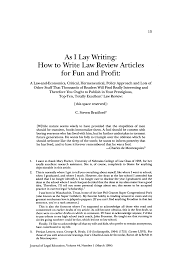If you’re wondering how to write an article review, you’ve come to the right place. The following tips will show you how to structure your review properly: start with an introduction and conclude with a conclusion. These parts must be separate and distinct, and you should use transition words to link them together. Don’t use personal bias in your article review! Weigh the pros and cons of an article carefully. Ultimately, you’re trying to help readers decide if it’s worth reading.
Writing an article review
The process of writing an article review involves evaluating an article by combining elements of a summary and an evaluative analysis. The article review is typically assigned by a teacher or other authority to introduce students to the work of a particular professional. To write an accurate summary, an individual must first understand the key points and logically evaluate the article’s main theme and supporting arguments. The review also includes a discussion of the article’s implications and suggests future research.
To start, check the article for contradictions, gaps, and errors. If you find any, highlight them. Check the title, abstract, research, and other headings. Next, read the article paragraph by paragraph. Once you have read the article, write a summary of what you learned and why your readers would benefit from the article. The reviewer should avoid copying the author’s language or citations word for word.
Summarizing an article
The task of summarizing an article review may seem daunting. After all, it involves capturing the author’s ideas in a short, focused piece. However, it’s easier said than done. Here are some tips to sum up your article review. First, make sure that your summary is no longer than two double-spaced pages. Remember that the article review is graded for its completeness, clarity, and succinctness.
First, you have to determine the main arguments of the article. Make notes on the points that support the main thesis. Depending on your subject matter, you can use the author’s last name or even a pronoun to show what the author is trying to convey. In addition, you can include the supporting arguments. Lastly, you should make sure that the thesis statement and title of the article are included in the summary.
Correcting vague terms
An article review is a valuable resource for an author. It can help the author make their writing clearer by identifying vague terms and clarifying key questions. It can also help the author make improvements to their grammar and writing style, and can even encourage them to do better the next time around. The process of analyzing an article review is a valuable exercise in developing a writer’s conscience. Here are some tips for a more constructive article review:
Getting out of personal biases
It can be difficult to stay neutral about certain topics when you’re a writer, but there are ways to minimize bias in your writing. One of the easiest methods to minimize bias is to avoid generalizations. Avoid saying “women,” “Christians,” or even “people with paralysis disorder.” Unless you’re specifically referring to these groups, mentioning them in your notes is likely to indicate that you have biases.
Proofreading
The process of proofreading an article is an important step towards publishing it. This stage checks spelling and grammar errors, as well as the clarity of the author’s idea and intended audience. The purpose of proofreading is to increase the impact of the discourse, as well as to ensure its objectivity and assertiveness. There are a number of steps that need to be taken before a proofreading checklist can be completed. These steps are discussed below.
To proofread the article, choose a time of day when you can be more objective. For example, if you’re a morning person, proofreading should be done in the morning. If you’re a night owl, try proofreading it in the evening. Another useful tip is to print out your document so that you can easily spot mistakes. Using a printout will also allow you to spot errors that may go undetected by a computer.


